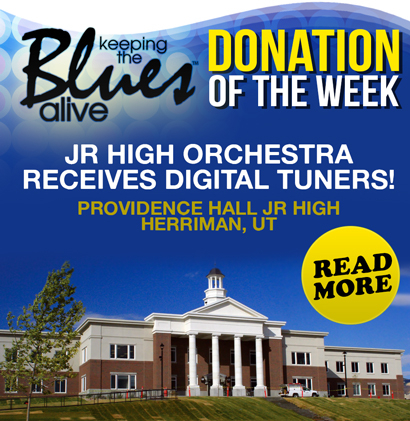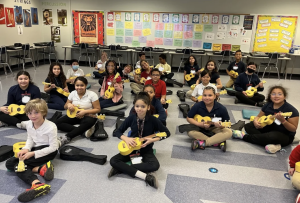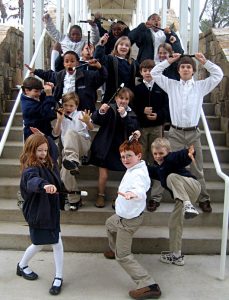herriman, utah – It is a brand new year! 2014 has arrived and KTBA didn’t waste any time getting the ball rolling with our donation for the week.
Middle school students at Providence Hall Jr High Charter in Herriman, Utah will be thrilled to find out that their orchestra will be outfitted with digital tuners!
Mrs. Pierson, the orchestra’s director, explains: “Have you ever tried to tune a string instrument? Have you ever had a string break and hit you in the face? These are common challenges in my school orchestra. My young students are scared to tune because they don’t know how or they are afraid of breaking a string… Also, they struggle to hear the difference between a C and C#.”
Tuning an instrument can be very difficult. Over the years, musicians have used different methods of naturally tuning their instruments, but it largely depends on ear training. In fact, it is so crucial to the foundation of musicianship, that virtually every accredited music institution requires some sort of two-course Ear Training, Sight-singing, or Vocal portion of the core curriculum to graduate – no matter what instrument you major in. Trust me when we tell you – the courses can be extremely difficult! Unless you have the rare gift of “perfect pitch” your ear must be properly trained to distinguish intervals between pitches and pitch-matching. Once the foundation of understanding the audible distinction between sharp and flat notes, the musician must refer to some sort of tool to use as a pitch reference in practice and performance.
Percussionists must study these principles so as to be able to tune the timpani, or effectively tune tom drums and even hand percussion! On stage, they use pitch forks which are small, pocket-sized, two-prong metal forks that resonate to a designated pitch when they are lightly struck – either tapping it with a finger, or tapping it on your leg as you sit on the stool. Vocalists often carry what’s called a “pitch-pipe” that refers to a small circular device (picture a circular harmonica) which you blow into in order to match the desired pitch.
For string instruments, many companies make digital tuners that allow you to tune your instrument by simultaneously monitoring an LED light that indicates exactly how flat or sharp the string is, in relation to the desired pitch. This saves a lot of time while on stage (especially during those brief but awkward silences on stage during performances). It also saves time during rehearsal while holding each musician accountable for maintaining proper pitch during passages. Additionally, they now make a tuner that clips on to the end of the strings, and can measure the vibrations of each string. This is the latest technology in efficient tuning practices!
With the donations raised over the New Year, we were able to buy five (5) clip-on tuners for Mrs. Nielson’s orchestra as well as two (2) metronomes. Metronomes are devices that produce audible “ticks” or “beats” that are evenly distributed per minute. So 90 bpm (beats per minute) means that you will hear the pulse 90 perfectly distributed times in one minute. Having metronomes on stage and on the podium allow the performers to start each song with an exact reference of how fast or slow the song should be performed.
We are sincerely grateful to those who have helped us thus far, and as we do every week, we will continue to reach out to schools in need, and supplying resources and materials in order to keep music programs flourishing!
Happy New Year, and make sure to check back with us next Wednesday to find out which music program we support next!
If you would like to help us fund next week’s project, click here!







